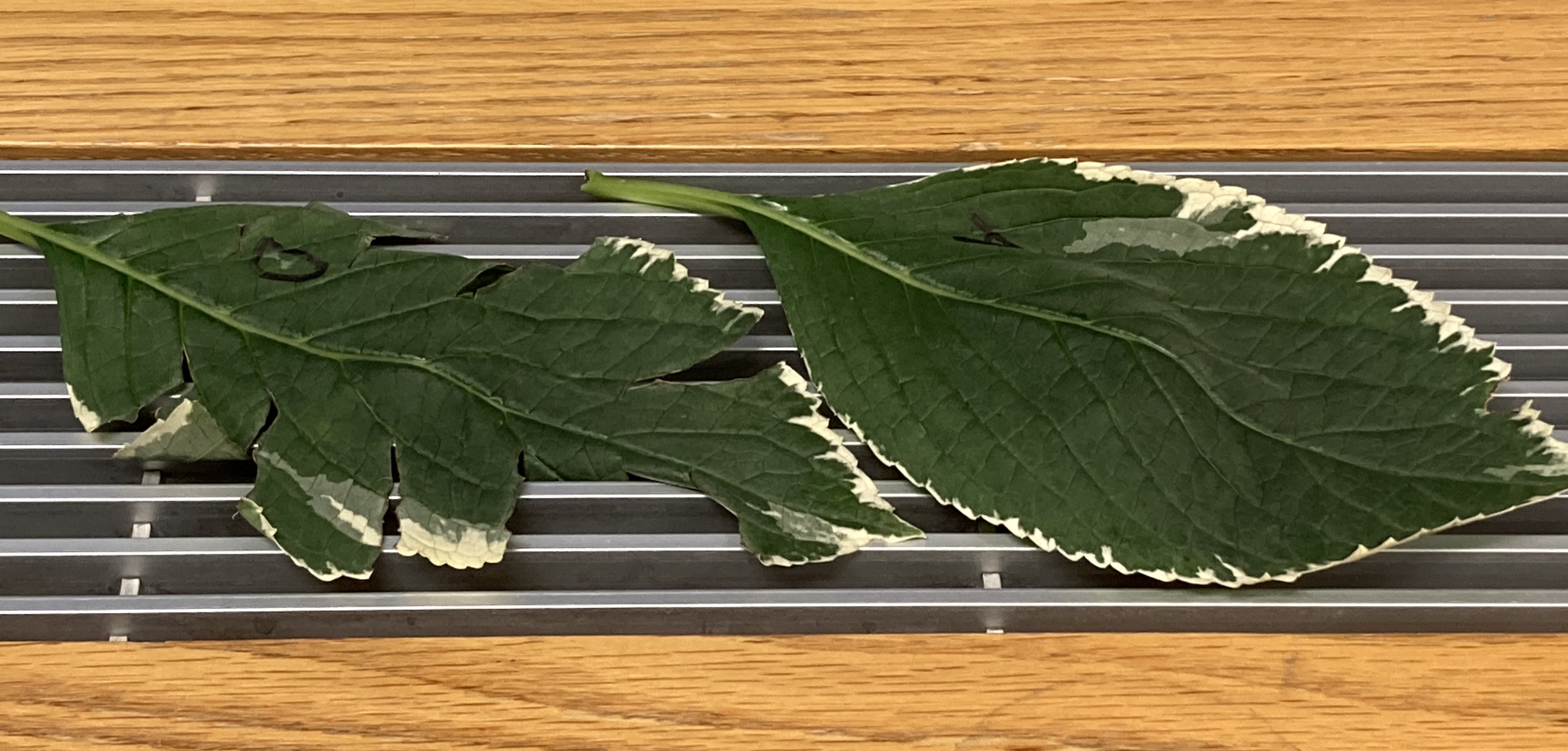By Richard B. Primack
“I enjoy more drinking water at a clear spring than out of a goblet at a gentleman’s table.” Henry David Thoreau in his Journal.
Over the decades, I have envied professors of Chemistry and Physics who carry out dramatic experiments right in front of students during lecture time. Why can’t Biology professors do this too? So, this semester I attempted to do an experiment in class.
To illustrate the function of the waxy cuticle of leaves to prevent water loss, I collected six large living Hydrangea leaves. At the start of class, the leaves were labeled with a Sharpie pen, weighed, and then randomly assigned to one of three treatments: control leaves; leaves with a few tears in the leaf surface; leaves with many tears in the leaf surface. No leaf fragments came off during the treatments, which student volunteers carried out.
The hypothesis was that leaves with damage to the leaf cuticle would lose more water than control leaves.
 |
| Photo 1: Students carrying out leaf treatments in class. |
 |
| Photo 2: Leaves illustrating the three treatments, with one being weighed. A heavily torn leaf is on the left and a lightly torn leaf is on the right. |
Following treatment, leaves were left on a table in front of the class and then weighed after 45 minutes. Not much weight loss had occurred, so leaves were placed on a grill above a warm radiator with the expectation that it would cause greater water loss.
 |
| Photo 3: A control leaf and lightly torn leaf on a radiator. |
After 75 minutes, the leaves were weighed again. Now there was a clear difference among the treatments. While the control leaves had lost 7.5 % of their weight, the heavily torn leaves had lost 15 % of their weight. The lightly torn leaves were intermediate in weight loss.
 |
| Figure 1: Results showing a greater loss of water in heavily damaged leaves in comparison with control leaves. |
 |
| Photo 4. During the experiment, the results were written on the blackboard, so the students could see the progress. |
Considering that this is the first time this experiment had been tried, it was surprising how clear the results were. Was it worthwhile? Could other experiments be developed for use during botanical lectures?
No comments:
Post a Comment